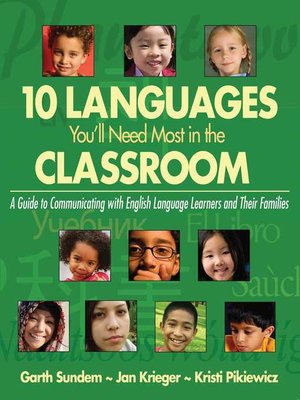10 Languages You'll Need Most in the Classroom: a Guide to Communicating with English Language Learners and Their Families
ebook
By Garth Sundem

Sign up to save your library
With an OverDrive account, you can save your favorite libraries for at-a-glance information about availability. Find out more about OverDrive accounts.
Find this title in Libby, the library reading app by OverDrive.



Search for a digital library with this title
Title found at these libraries:
| Library Name | Distance |
|---|---|
| Loading... |
Break through language barriers and put ELL students at ease in your classroom!
More than ever before, K–12 educators in today's classrooms teach students from diverse language backgrounds. This handy reference guide to the ten most common languages of students who do not speak English—Spanish, Russian, Vietnamese, Arabic, Tagalog, Haitian Creole, Navajo, Hmong, Cantonese, and Korean—offers practical guidance for communicating with ELL students and their families. With a chapter dedicated to each language, this book provides a wealth of resources to help you make meaningful connections with ELL students, including:
Information about the traditions, religions, and celebrations of the family's country of origin
Guides to common words and phrases in the student's native language
Picture dictionaries that can be reproduced for use with students
Sample parent letters that include both English and native language translations
Basic reading tests in ten languages
Language can be an intimidating barrier to many students and teachers alike. Don't let it stand in the way of success. Help ensure that English Language Learners successfully transition into the school community and participate fully in the classroom learning environment!
More than ever before, K–12 educators in today's classrooms teach students from diverse language backgrounds. This handy reference guide to the ten most common languages of students who do not speak English—Spanish, Russian, Vietnamese, Arabic, Tagalog, Haitian Creole, Navajo, Hmong, Cantonese, and Korean—offers practical guidance for communicating with ELL students and their families. With a chapter dedicated to each language, this book provides a wealth of resources to help you make meaningful connections with ELL students, including:
Language can be an intimidating barrier to many students and teachers alike. Don't let it stand in the way of success. Help ensure that English Language Learners successfully transition into the school community and participate fully in the classroom learning environment!







